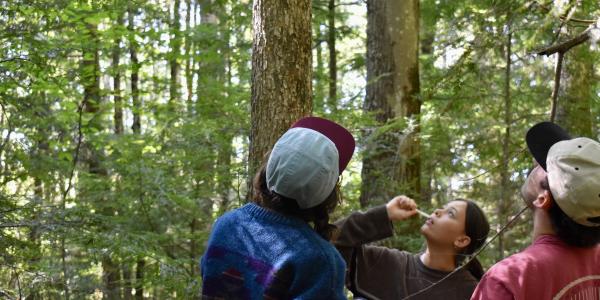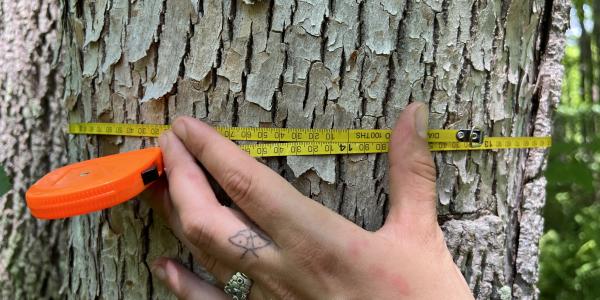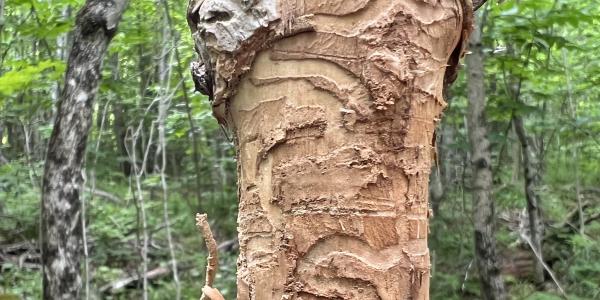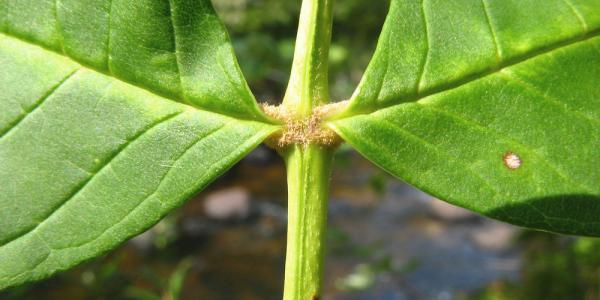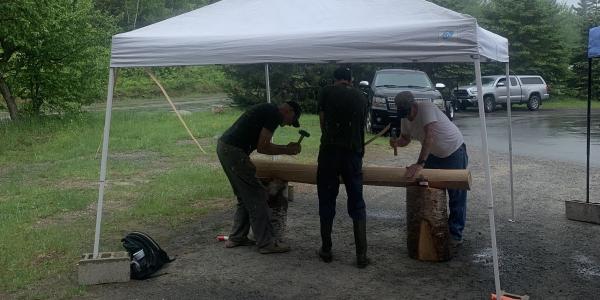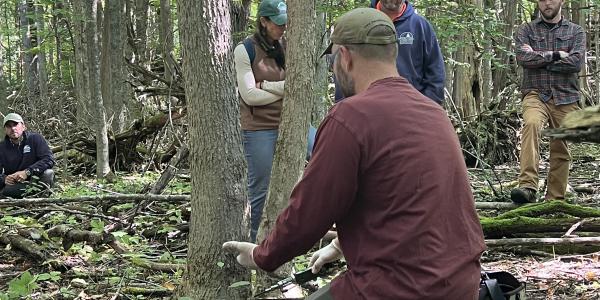Black ash (Fraxinus nigra) trees are captivating -- with corky, furrowed bark, they inhabit some of Vermont’s wettest, swampiest, buggiest forests. This tree species has close ties to the Abenaki people who use the splints of black ash for various traditional practices. They also fill a unique ecological role in wetlands, seepage forests, and other seasonally saturated places, transpiring huge amounts of water and providing overstory in what can be challenging growing conditions for other tree species.
Studies indicate that black ash trees lack chemical and physical defenses to the non-native emerald ash borer. As EAB continues to spread through Vermont’s forests, black ash trees will likely become extinct without specific intervention from scientists and land managers. The choices of landowners, public lands managers, and curious community members will help to determine the future narrative of black ash in Vermont. Check out the resources below to learn more.
In 2022 and 2023, University of Vermont graduate student Charlotte Cadow (now a M.Sc. graduate working for The Nature Conservancy) wrote two valuable reports summarizing her work in black ash seepage forests, connecting with basket makers, and learning about the overlapping cultural and ecological roles of black ash on this continent. Spend time with Charlotte's literature review and project report to broaden your understanding of this unique and ecologically threatened tree.
Resources for Landowners
Explore black identification and emerald ash borer management, or join the network of landowners that will allow for a black ash harvest.
Landowner Resources
-

Webinar
View Vermont Land Trust webinar about managing ash trees on your property (June 2022).
-

Identification
View black ash identification guide and information on emerald ash borer.
-

Emerald Ash Borer Information
Explore resources for emerald ash borer identification and management.
-

Heartwood Podcast
Listen to episode 6, Losing Our Ash to learn about the cultural and ecological impact.
-

Webinar
-

EAB Infested Area
View current emerald borer infestation map.

Black Ash Network
If you’re a landowner with black ash trees on your property, and you are open to having folks to your property to harvest trees, please fill out the landowner form below.
Resources for Municipalities
Many municipal properties in Vermont are home to groves of black ash trees. In the fall of 2022, a group of UVM students dove into the where, why, and how black ash persist in these forests.
View interactive map and explanation of black ash in town forests and explore UVM students’ report detailing black ash management recommendations with a video presentation and PDF report below.
University of Vermont Student Projects in Town Forests
Black Ash Project Data
During big rain events or spring run-off, black ash can hold and transpire immense quantities of water. This is an important service to other species that can’t tolerate wet conditions. To study the effects of a dwindling black ash population, Vermont has 18 long-term monitoring plots located in 10 sites across Vermont. Data and stories from the first year of plot establishment and monitoring can be found below.
Data Summary Stories from the Field
Indigenous People of Vermont
Vermont is home to many indigenous people, including the Abenaki. There are currently four state-recognized tribes, including the Elnu Abenaki Tribe, the Nulhegan Abenaki Tribe, the Koasek Traditional Band of the Koas Abenaki, and the Abenaki Nation at Missisquoi. More information about Vermont’s indigenous community can be found below.
- Vermont Commission on Native American Affairs
- Vermont Abenaki Artists Association
- Nulhegan Band of the Coosuk Abenaki Nation
- Elnu Abenaki Tribe
- Koasek Traditional Band of the Koas Abenaki: Does not currently maintain a website
- Abenaki Nation at Missisquoi
Questions
Questions? E-mail Joanne Garton at Joanne.Garton@vermont.gov.










